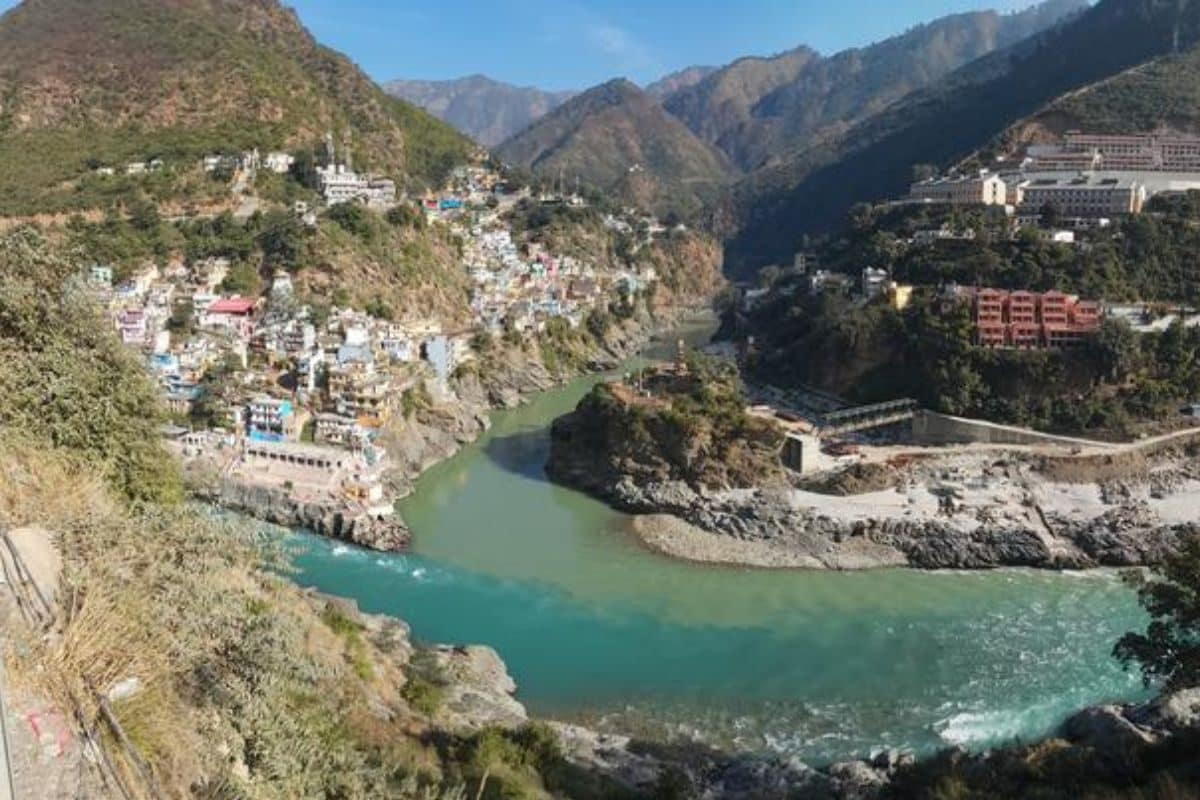The Rs 110 million research project will focus on the 150km stretch covering the Rishiganga-Dhauliganga catchment area hit by the 2021 Chamoli disaster which killed 200 people and washed away critical hydro-electric facilities
Scientists from India and the United Kingdom have joined forces to better understand the aftermath of the deadly ice-rock mass avalanche that struck Chamoli district in Uttarakhand in 2021, resulting in a fast-moving, debris-laden flood that killed 200 people and caused massive destruction.
The Rs 110 million project funded by the Natural Environment Research Council, a part of UK Research and Innovation, will focus on the 150km stretch of the Ganga river covering the Rishiganga-Dhauliganga catchment area. The researchers will use the data gathered post-disaster through drones and satellite imagery to monitor the changes in the landscape and river basin and use the knowledge to forecast the long-term effects of the debris flow during such disasters.
“We have done many studies before, but there is still much to learn about the long-term effects of such calamities. For instance, the huge sediment flow has led to toe cutting near the slopes leading to Reni village which may further exacerbate the local land subsidence. There are many villages, communities living in this region, and we need this knowledge to better guide about any development work in this region, and improve disaster-mitigation,” said Dr Kalachand Sain, Director-Wadia Institute of Himalayan Geology, Dehradun.
The three-year-long project has been named SUPERSLUG — based on the huge mass of debris created by such natural disasters downstream. It will be led by the UK’s University of Plymouth, with experts from the universities of Exeter, Hull, Leeds, Newcastle and Staffordshire, Canada’s University of Calgary, as well as Indian Institute of Technology (IIT), Roorkee, and the Wadia Institute of Himalayan Geology, Dehradun. The first team is slated to visit Chamoli in November this year.
CHAMOLI DISASTER: THREE YEARS ON…
The focus will be on the large volume of sediments that get transported during such deadly landslides which can impact the river basin for decades — long after the main source of danger has passed. “We urgently need to understand their effects on river catchments and the communities that rely on them for water, power and their livelihoods more generally,” project lead Matt Westoby, Associate Professor of Physical Geography at the University of Plymouth, said.
The research has far-ranging implications for the seismically fragile Himalayan region which is already projected to witness more such disasters in the face of climate change and increased deforestation.
“High mountain regions such as the Himalayas are among the most active — and most hazardous — on the planet. The effects of a changing global climate are only going to exacerbate that hazard, with more intense monsoons leading to increased landslide activity, and the retreat of glacial ice cover causing landscape instability and triggering far-reaching floods,” added Dr Westoby.
MITIGATING A FUTURE DISASTER
The team will use the data to develop and test numerical models to predict where, when and how the long-term impacts of recent and future extreme events might be felt. They will also employ seismic sensors and automatic water-level monitoring to study the debris flow.
“Often, it’s the rocks, house-sized boulders and sheer volume of sediment rather than flood water that causes the most damage. It’s thought this mass of sediment released downstream could pass through like a wave or slug of sediment. But how long it takes for it to move on through is largely unknown. It may be years, decades or centuries. So, understanding how long a sediment slug sticks around is crucial to manage such events and predict their impacts,” said Tom Coulthard, Professor of Physical Geography at the University of Hull.
The Chamoli disaster was widely studied by researchers from across the world, some of whom also visited the site to understand the processes that led to it. According to WIHG Director Dr Sain, the knowledge can be used to do similar studies for other river basins prone to such disasters.
“For many years, we have been doing these studies. However, this science will only be useful if it can be applied to do better disaster mitigation in future. It is critical that everyone — from communities and authorities respond to these findings and warnings and incorporate them into policymaking,” he added.

